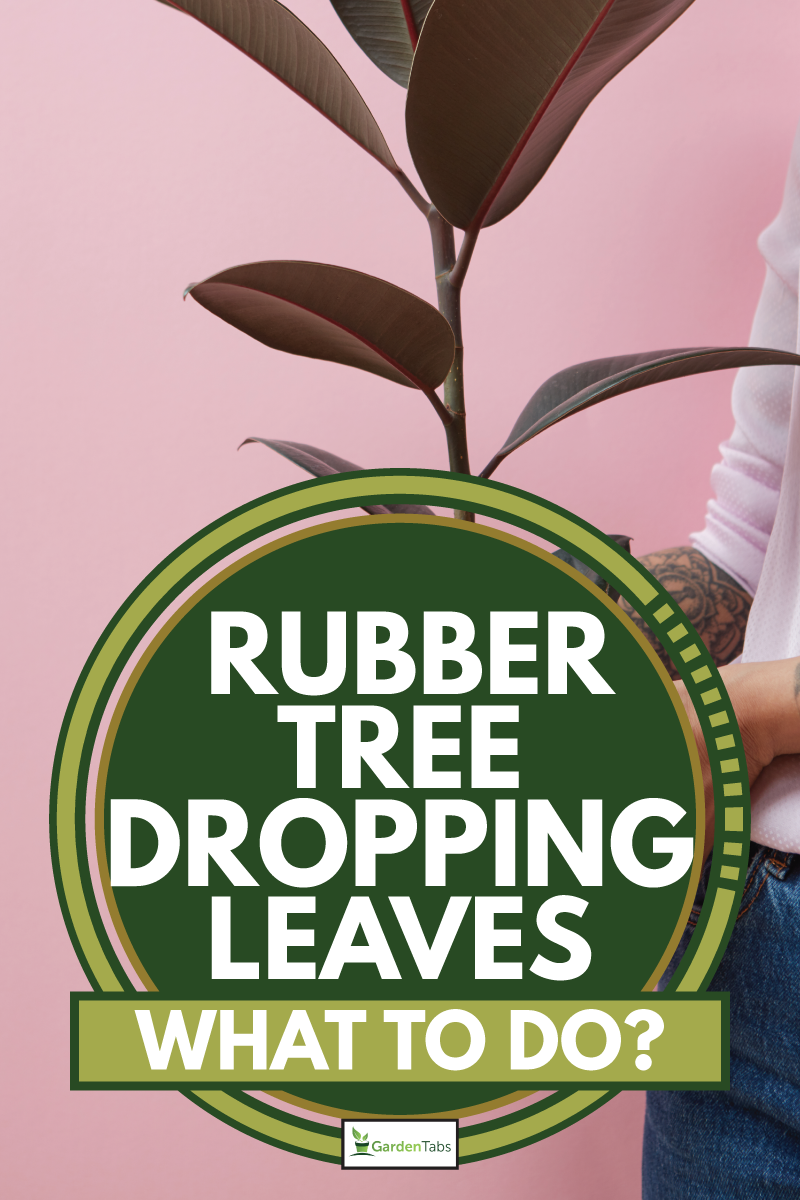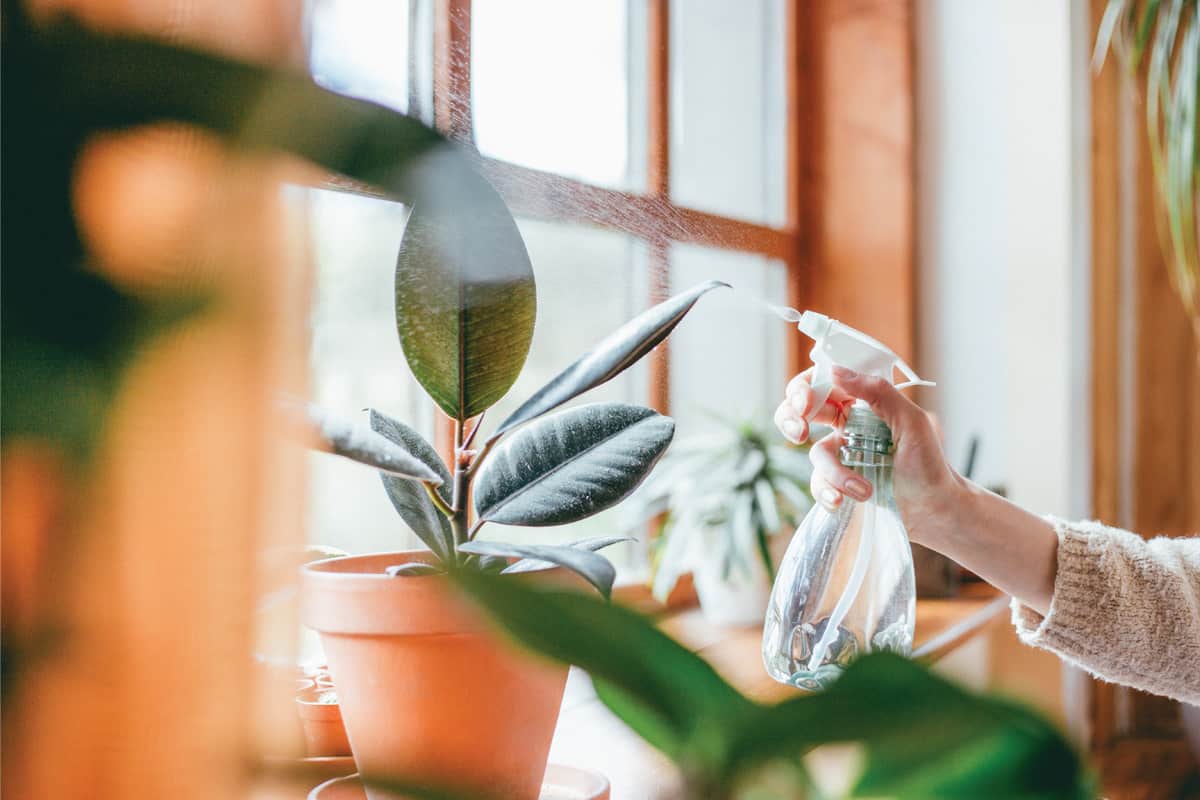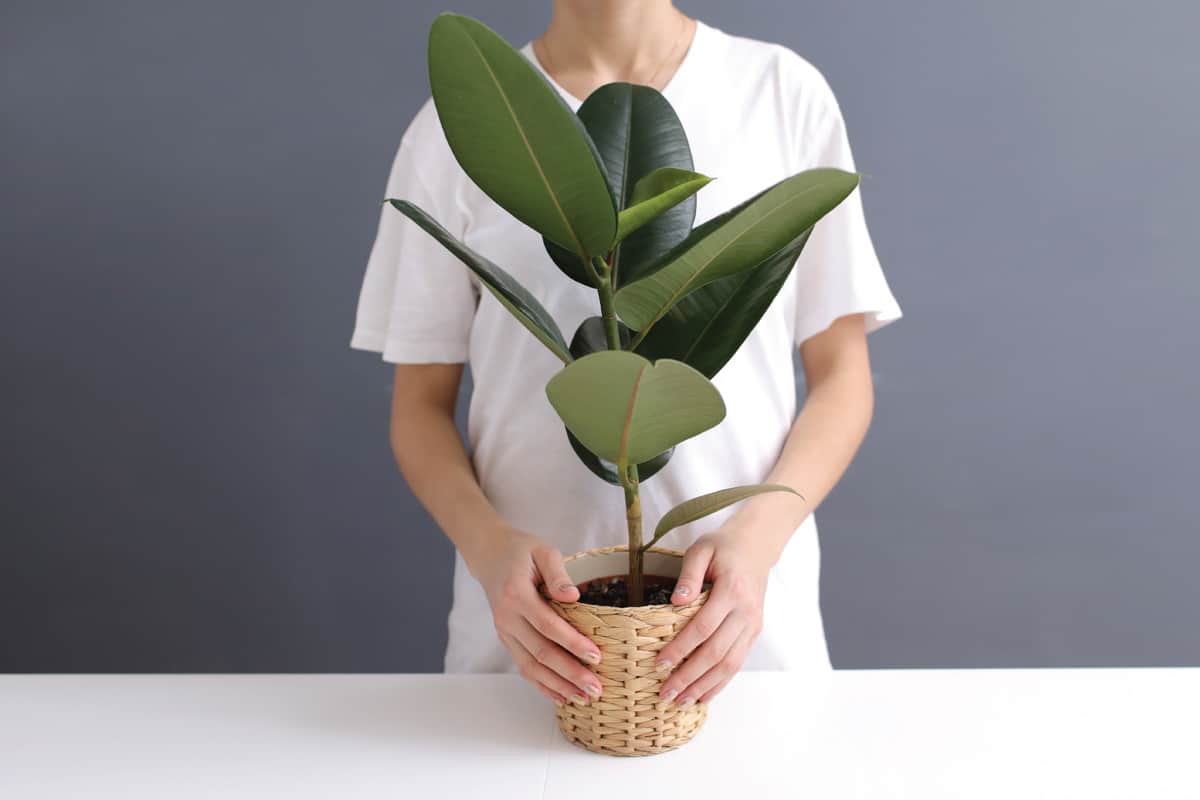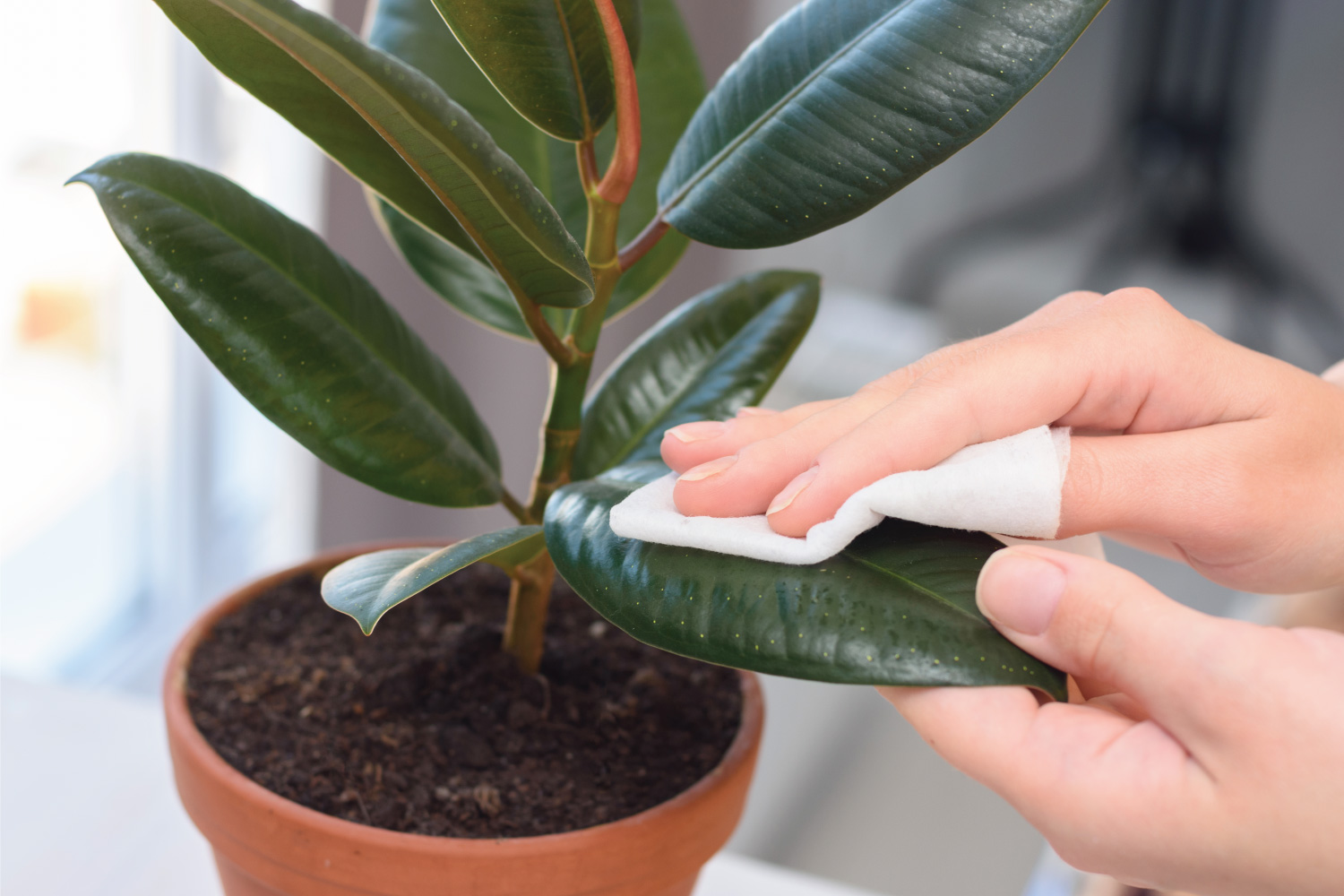Your rubber tree is dropping leaves and you want to know what to do about it? We've researched to find out the best way to handle this problem on the popular houseplant. This post will tell you why, and what to do should your rubber tree start to drop leaves.
Some of the reasons why your rubber tree might be dropping leaves include:
- Overwatering
- Underwatering
- Soil Issues
- Sunlight and Temperature Issues
- Pests
Let's take a look at each of these possibilities. We'll also discuss if the leaves can grow back, if you can save the yellowed leaves, if you can trim the brown part away, and how to clean your rubber tree. So please, keep reading.

Why Is My Rubber Tree Dropping Leaves?

With any houseplant, when they start to drop leaves it's often a sign of trouble. With a rubber tree (Ficus elastica) it can be one of a few reasons that are common for most houseplants. Let's look at these reasons and see how they relate to the rubber tree. You want to be sure and nip the dropping leaves in the bud so you don't end up with a bald plant.
Overwatering Or Underwatering
Getting the amount of water right for your rubber tree has a lot to do with keeping it healthy. Rubber trees like fairly moist soil but they don't want to drown. Conversely, they don't do well if they're starved of water either.
Water your rubber tree deeply, allowing all of the soil to soak through, but not to puddle. Then let it dry to just moist before rewatering again in the same fashion. If you let it dry for a couple of days too long, it probably won't cause leaves to drop, but they'll begin to brown at the edges when your plant is in danger from lack of moisture. If you overwater it, your leaves will yellow before dropping.
Soil Issues
Rubber trees are no different from other houseplants. They need a pot large enough to handle their root ball and soil that is not deprived of all nutrients. If your plant has had a growth spurt but then starts to drop leaves, it could have to do with crowded roots. Size up on your planter size if you've never repotted it.
If your rubber tree hasn't changed much in size, you're watering it correctly, but it seems lackluster, refresh the soil. With any houseplant, it's always a great idea to change out old soil for new. This gives your plant lots of fresh nutrients to pull up into its root system.
You can buy soil that's mixed specifically for your rubber tree. This 4-quart bag (1 dry gallon) is the perfect amount to refresh your current soil.
Click here for this product on Amazon.
Sunlight And Temperature Issues
If your leaves are dropping, and your water and soil are great, then think about your rubber tree's daily sunlight. Rubber trees like indirect sunlight. If you've got yours in a Florida room or next to a southern facing window that gets direct beams, it may be getting sunburnt. Sunburnt leaves will brown and fall off.
The same goes for too little sun. If your rubber tree is in a dark corner or too far from a window without a grow light, its leaves may start to yellow.
As for temperature, your rubber tree finds the ideal conditions to be between 60 and 85 degrees F. Too cold or too warm can cause leaves to drop on your plant.
Pests
Though your rubber tree is a hardy houseplant, it is susceptible to certain pests. Aphids, scale insects, and mealybugs can all affect it and over time, these infestations could cause leaf loss. The best way to bottle these types of pests is to clean your plant on a regular basis and catch the critters before they do harm. You can also buy products to get rid of the pests.
Sticky Traps
These sticky traps are easy to plant in your house plant's pots to help control insects and rule out this problem.
Click here for this product on Amazon.
Insecticide
An insecticidal soap like this one is easy to use. Spray onto a sponge and then clean your rubber tree's leaves and stalk to rid it of and prevent infestations. It works for most other houseplants, too.
Click here for this product on Amazon.
Will Rubber Tree Leaves Grow Back?

When the leaves fall off your rubber tree due to health issues, they won't grow back without some help from you. If they don't grow back, your plant will become kind of leggy. It will have a long stalk with leaves only at the top. If you want to prevent this and to encourage your rubber tree to grow new leaves from where they've come off, follow a few easy steps.
Take a clean non-serrated knife and just above the leaf node, make a small nick in the stalk. This will encourage new leaf growth from the plant. It's important to use a clean knife so that you don't inadvertently pass any bacteria or other irritants to the plant.
Can You Save Yellowed Rubber Tree Leaves?
While there is no way to turn your yellowed leaves from yellow back to green, there is a way to keep further leaves from turning yellow. The most common causes of yellowing leaves are overwatering, underwatering, not enough drainage, root-bound pots, or simply the age of the plant.
Once you've remedied the issue, is there any way to get rid of the leaves that did turn yellow? Yes. Simply prune those leaves off, being sure to use the knife and nick method above the leaf node to encourage the growth of a new leaf. This will get rid of the yellow leaves while encouraging lush new green leaves.
Why Does My Rubber Tree Have Brown Leaves?
If your rubber tree has brown tips on its leaves that are starting to spread, chances are it's not getting enough water. Rubber trees like to have deep waterings. Then they like for that soil to dry out to just moist before rewatering. If your soil feels dry to the touch, that may be why your leaves are brown.
Another reason is the lack of light. Your rubber tree will be just fine in indirect sunlight and out of the path of a sunbeam. But it won't survive in a room that's cut off from all light. If this is the issue, consider getting a grow lamp to help your rubber tree flourish.
This clip-on LED grow lamp even comes with a timer. Set it to give your rubber tree the optimum hours of light to prevent brown leaves.
Click here for this light on Amazon.
Should I Cut The Brown Tips Off My Plant?
It's always a good idea to trim unhealthy areas from a plant. This keeps it from having to expend its energy on sick leaves. Instead, it can send all of its energy to healthy leaves. You can either cut the leaves off entirely (then follow the nick method to encourage new growth at the leaf node) or trim away the dried out brown parts.
A little pair of pruning shears like these are a great tool for trimming back any damaged parts of your rubber tree's leaves. These are easy to grip and have nice sharp scissor-type blades for cutting. Remember to always clean the blades before trimming a plant so that you don't transfer any disease between plants.
Click here for these pruning shears on Amazon.
How To Clean Rubber Tree Leaves?

Perhaps you've never heard of cleaning a rubber tree's leaves. And why would you even have to clean their leaves? All homes have dust and because the rubber tree's leaves have a lot of surface area, dust lands there. Dust can keep your plant from absorbing the sunlight it needs to stay healthy. This is why it's a great idea to clean your rubber tree's leaves every other week or so.
Here's an easy way to keep your leaves dust-free and give them a bit of shine. Gather soft sponges or cloth, some water, and some full-fat milk. Yep, that's right, milk. The fat in the milk is what's going to give your rubber tree leaves a bit of shine. First, use a soft cloth and from the base to the tip of each leaf, wipe away any dust.
Then, mix 1/2 cup of the milk with a 1/2 cup of lukewarm water and then sponge the surface of each leaf. Again do this from the base toward the tip of the leaf. You do not need to wipe them dry, just let them air dry. When they're dry, you'll have a clean and shiny rubber tree plant.
In Summary
Anytime there's a problem with one of your houseplants, you want to turn to the list. You know the one, it includes water, light, food, temperature, soil, and pests. Chances are one of these issues is what will be causing the problem. It's no different for your rubber tree. We wish you the happiest green thumb as you return your plant to health.
If you enjoyed this post here at GardenTabs.com, please be sure to check out a few others below:





